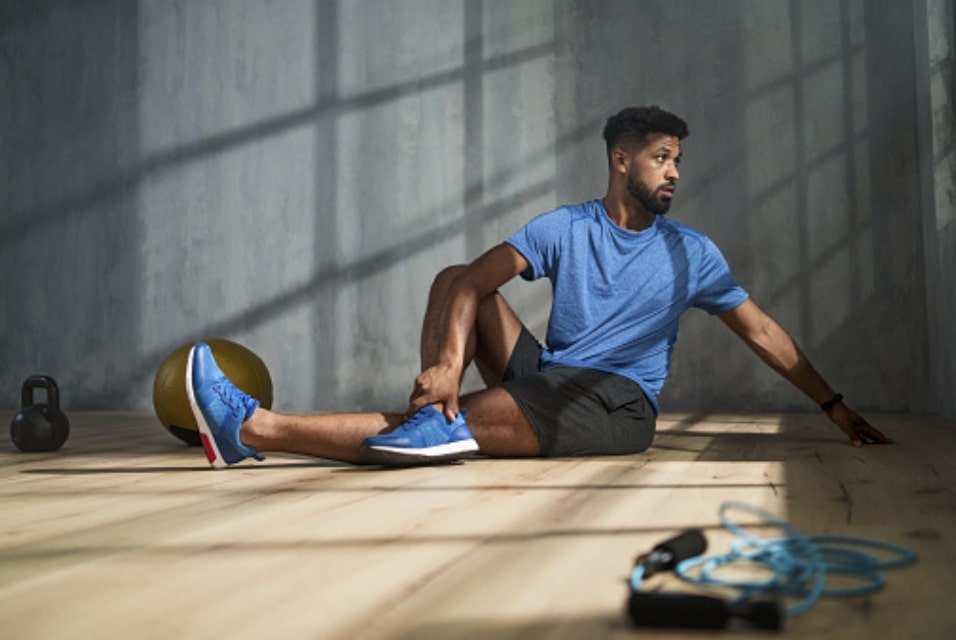Do you keep a runner’s goal file? Perhaps it includes a calendar of incremental steps, from 5K to 10K to half marathon to marathon, that you want to achieve. Congratulations on defining your running purpose. Here’s a companion catalog you should consider adding to the schedule: a calisthenics list.
Every runner can benefit from calisthenics, from those who take morning jogs to the competitive 4-minute miler. These bodyweight exercises are easy, accessible, and functional for anyone who wants to run longer and faster. They increase strength and flexibility, improve endurance, and prevent injury. What’s more, you don’t need weights, equipment, or a gym membership to do them.
To take your running program to the next level, consider integrating this series of bodyweight exercises into your training. And, as always, remember to stretch.
Squats
Why You Should: Squats are excellent for everyone. They represent one of the most functional exercises we can do. They strengthen knees, hamstrings, and calves, all of which are elemental for runners. Squats will add power to your runs.
How You Should: Start from a standing position, with one foot in front of the other, and make a stationary lunge simply by lowering your body. Resist the urge to go forward; your front knee should remain behind your toes. Move your back knee parallel to the floor. For advanced lungers, try walking lunges to mimic a slow-motion version of running.
Planks
Why You Should: Planks fire up the core (abs, lower back, and hips) and strengthen the shoulders. They also help you develop length in the spine, protecting the back from injury. And you can do them anywhere.
How You Should: Whether you start with forearm planks on your knees or perform the full plank on your hands and toes, maintain a long, angled line through the body. In the regular plank, everything should be straight: arms, body, and feet. Once you’ve mastered the conventional plank, try the more challenging side plank, which is great for the core.
Fire Hydrant
Why You Should: Do you run hills or want to generate more power in your runs? This exercise strengthens the glutes and hips, creating extension and stability in the area.
How You Should: Get on all fours like you’re a table, keeping arms and back straight, elbows locked, and knees under the hips. Raise one leg to the side, away from the body at a 90-degree angle, and next lower it. You also can raise the leg back 45 degrees to work other muscles.
Bridges
Why You Should: Sitting, driving, and texting cause us to hunch and develop tight back muscles, limiting movement. Bridges loosen the back and pelvis, work the glutes and hamstrings, and help us move better.
How You Should: Lay on your back with feet hip distance apart and knees bent. Then roll up off the floor, curling your back upward to create a diagonal line through the neck and chest. Move slowly, feel the stretch, and then move slowly back to the resting position.
A Skip
Why You Should: Skips are great warmups and mechanical exercises. Done right, they help you develop alignment and internalize your running mechanics.
How You Should: This is a hopping exercise broken into movements. You hop, raise one leg to 90 degrees, hop, then repeat with the other leg. Alternate arm strikes with the arm opposite your knee pump. It takes time, but good form is vital to proper A skips.
Pushups
Why You Should: Upper-body strength increases running efficiency and oxygen intake. It also helps prevent the muscle imbalance that affects some runners.
How You Should: Start in a plank position, shoulders over wrists, and form a straight line from head to heel. Then, lower your body down and push it back up. Don’t rush or elevate the hips and glutes.
Single-leg Deadlift
Why You Should: Deadlifts strengthen the hamstrings, knees, and glutes, essential running components. Single-leg lifts further help improve balance and stability.
How You Should: With one leg planted and that knee slightly bent, lower your upper body to the floor and raise the other leg behind you. Keep your back flat and don’t hunch your shoulders. If you’re using a weight, hold it on the same side as the leg you’re raising.
Calf Raises
Why You Should: Take care of your feet and Achilles, and improve your balance, by strengthening those calves.
How You Should: Stand with feet at hip width and pivot up onto your tiptoes. Go slowly, feeling your calves stretch. Want a bigger challenge? Try one-legged raises.
Calisthenics Tips for Runners
These bodyweight exercises are easy, portable, and beneficial. But they require commitment and good form. Runners who do them consistently and properly can run longer, faster, and more freely.








